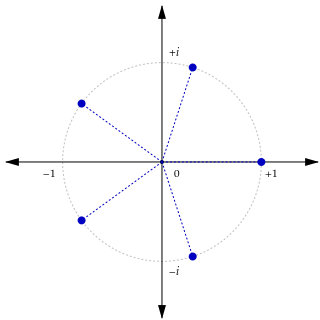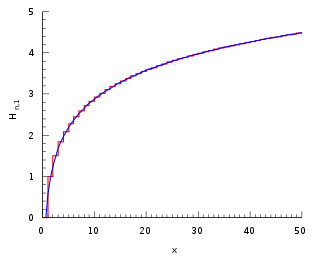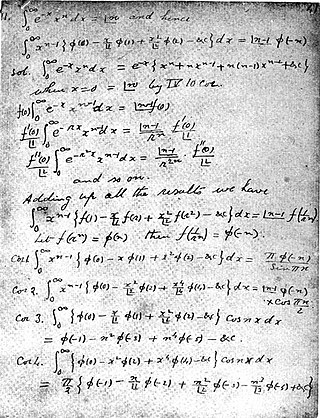Nilpotent groups
Let  be a finitely generated torsionfree nilpotent group. Then there exists a composition series with infinite cyclic factors, which induces a bijection (though not necessarily a homomorphism).
be a finitely generated torsionfree nilpotent group. Then there exists a composition series with infinite cyclic factors, which induces a bijection (though not necessarily a homomorphism).

such that group multiplication can be expressed by polynomial functions in these coordinates; in particular, the multiplication is definable. Using methods from the model theory of p-adic integers, F. Grunewald, D. Segal and G. Smith showed that the local zeta function

is a rational function in  .
.
As an example, let  be the discrete Heisenberg group. This group has a "presentation" with generators
be the discrete Heisenberg group. This group has a "presentation" with generators  and relations
and relations

Hence, elements of  can be represented as triples
can be represented as triples  of integers with group operation given by
of integers with group operation given by

To each finite index subgroup  of
of  , associate the set of all "good bases" of
, associate the set of all "good bases" of  as follows. Note that
as follows. Note that  has a normal series
has a normal series

with infinite cyclic factors. A triple  is called a good basis of
is called a good basis of  , if
, if  generate
generate  , and
, and  . In general, it is quite complicated to determine the set of good bases for a fixed subgroup
. In general, it is quite complicated to determine the set of good bases for a fixed subgroup  . To overcome this difficulty, one determines the set of all good bases of all finite index subgroups, and determines how many of these belong to one given subgroup. To make this precise, one has to embed the Heisenberg group over the integers into the group over p-adic numbers. After some computations, one arrives at the formula
. To overcome this difficulty, one determines the set of all good bases of all finite index subgroups, and determines how many of these belong to one given subgroup. To make this precise, one has to embed the Heisenberg group over the integers into the group over p-adic numbers. After some computations, one arrives at the formula

where  is the Haar measure on
is the Haar measure on  ,
,  denotes the p-adic absolute value and
denotes the p-adic absolute value and  is the set of tuples of
is the set of tuples of  -adic integers
-adic integers

such that

is a good basis of some finite-index subgroup. The latter condition can be translated into
 .
.
Now, the integral can be transformed into an iterated sum to yield

where the final evaluation consists of repeated application of the formula for the value of the geometric series. From this we deduce that  can be expressed in terms of the Riemann zeta function as
can be expressed in terms of the Riemann zeta function as

For more complicated examples, the computations become difficult, and in general one cannot expect a closed expression for  . The local factor
. The local factor

can always be expressed as a definable  -adic integral. Applying a result of MacIntyre on the model theory of
-adic integral. Applying a result of MacIntyre on the model theory of  -adic integers, one deduces again that
-adic integers, one deduces again that  is a rational function in
is a rational function in  . Moreover, M. du Sautoy and F. Grunewald showed that the integral can be approximated by Artin L-functions. Using the fact that Artin L-functions are holomorphic in a neighbourhood of the line
. Moreover, M. du Sautoy and F. Grunewald showed that the integral can be approximated by Artin L-functions. Using the fact that Artin L-functions are holomorphic in a neighbourhood of the line  , they showed that for any torsionfree nilpotent group, the function
, they showed that for any torsionfree nilpotent group, the function  is meromorphic in the domain
is meromorphic in the domain

where  is the abscissa of convergence of
is the abscissa of convergence of  , and
, and  is some positive number, and holomorphic in some neighbourhood of
is some positive number, and holomorphic in some neighbourhood of  . Using a Tauberian theorem this implies
. Using a Tauberian theorem this implies

for some real number  and a non-negative integer
and a non-negative integer  .
.
Subgroup growth and coset representations
Let  be a group,
be a group,  a subgroup of index
a subgroup of index  . Then
. Then  acts on the set of left cosets of
acts on the set of left cosets of  in
in  by left shift:
by left shift:

In this way,  induces a homomorphism of
induces a homomorphism of  into the symmetric group on
into the symmetric group on  .
.  acts transitively on
acts transitively on  , and vice versa, given a transitive action of
, and vice versa, given a transitive action of  on
on

the stabilizer of the point 1 is a subgroup of index  in
in  . Since the set
. Since the set

can be permuted in

ways, we find that  is equal to the number of transitive
is equal to the number of transitive  -actions divided by
-actions divided by  . Among all
. Among all  -actions, we can distinguish transitive actions by a sifting argument, to arrive at the following formula
-actions, we can distinguish transitive actions by a sifting argument, to arrive at the following formula

where  denotes the number of homomorphisms
denotes the number of homomorphisms

In several instances the function  is easier to be approached then
is easier to be approached then  , and, if
, and, if  grows sufficiently large, the sum is of negligible order of magnitude, hence, one obtains an asymptotic formula for
grows sufficiently large, the sum is of negligible order of magnitude, hence, one obtains an asymptotic formula for  .
.
As an example, let  be the free group on two generators. Then every map of the generators of
be the free group on two generators. Then every map of the generators of  extends to a homomorphism
extends to a homomorphism

that is

From this we deduce

For more complicated examples, the estimation of  involves the representation theory and statistical properties of symmetric groups.
involves the representation theory and statistical properties of symmetric groups.























































